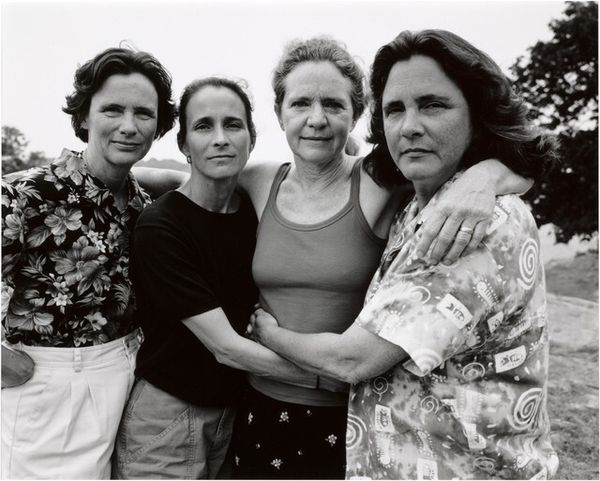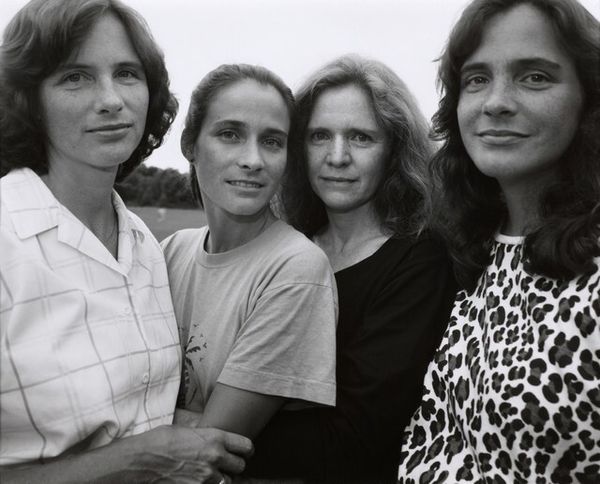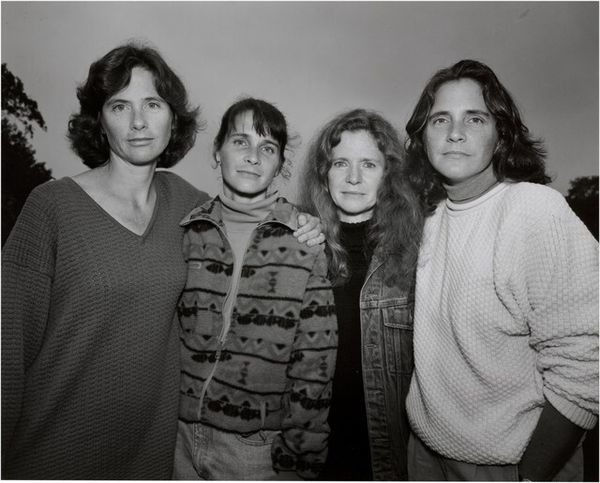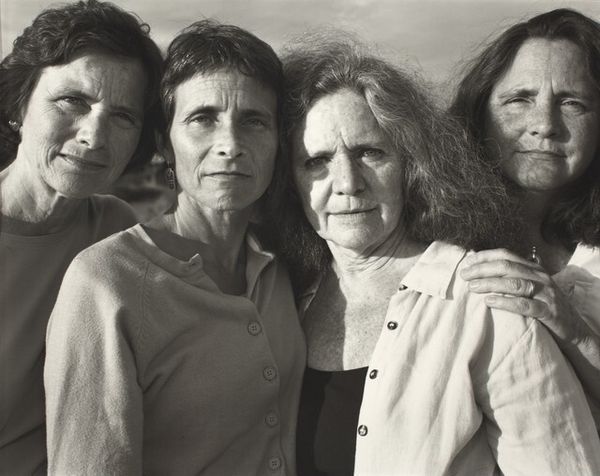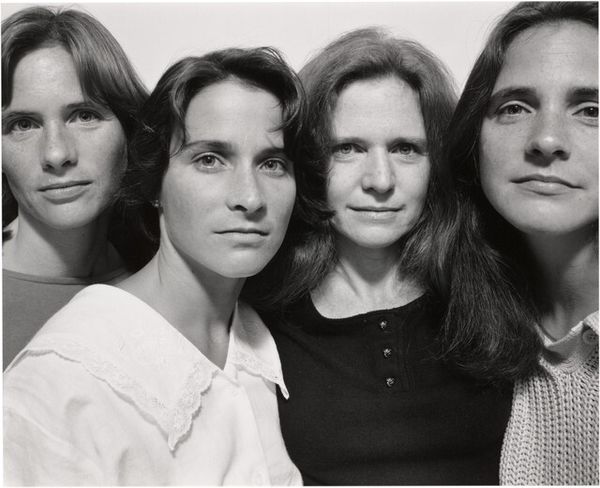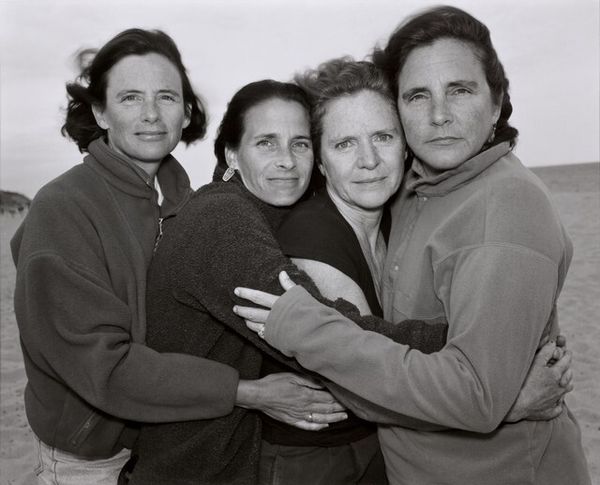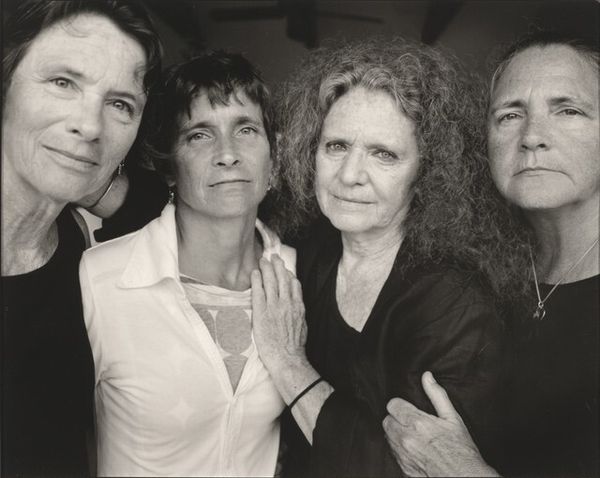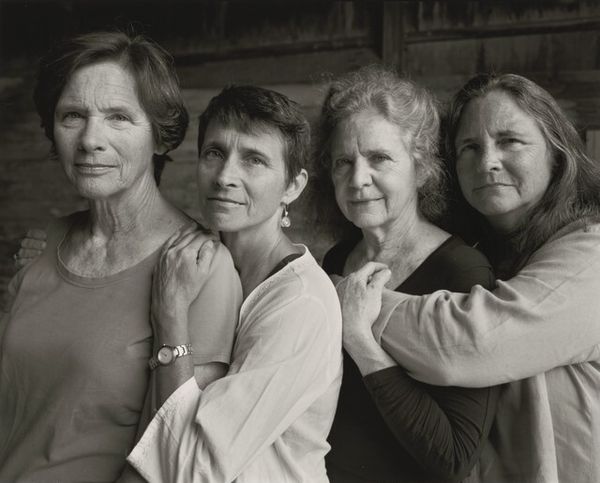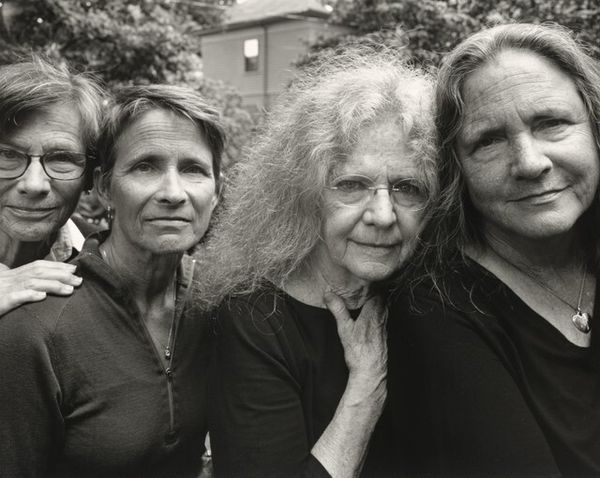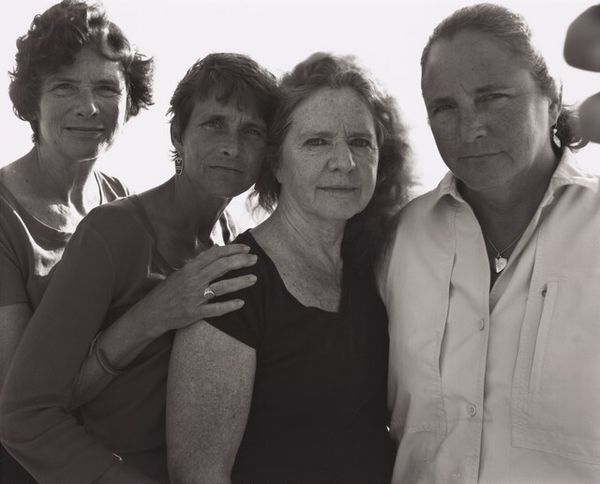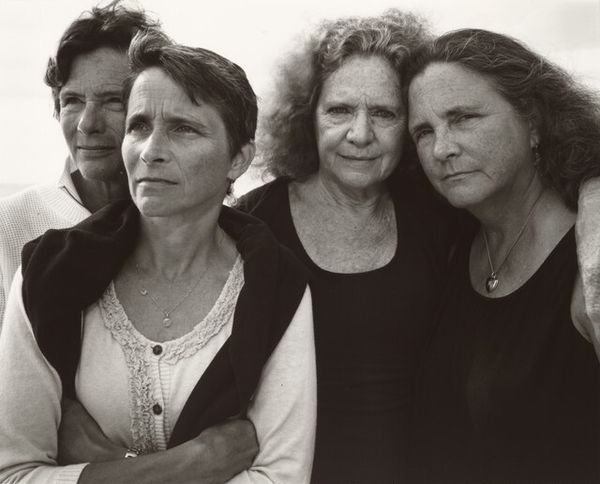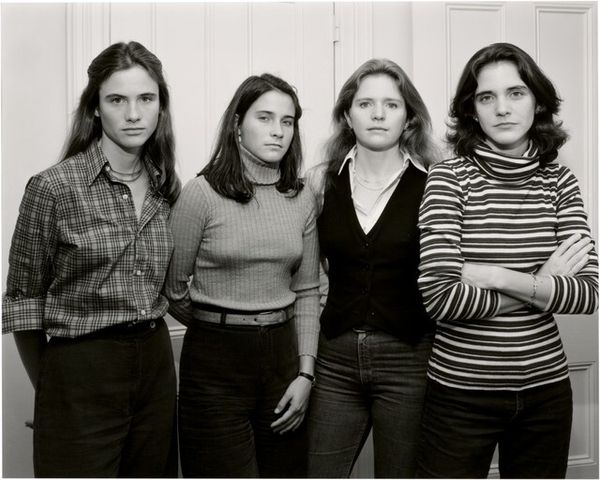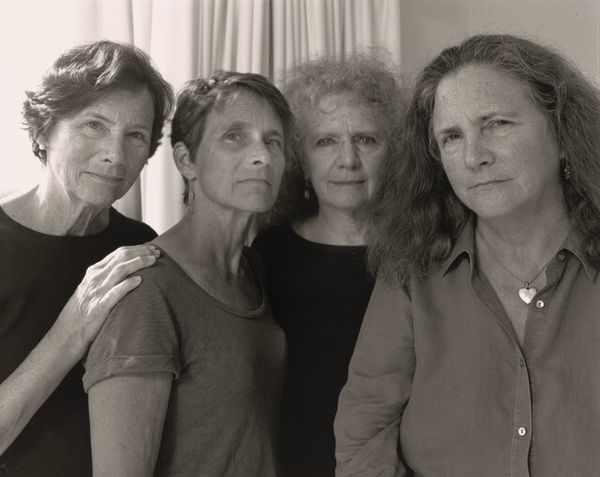
photography, gelatin-silver-print
#
portrait
#
contemporary
#
black and white photography
#
black and white format
#
photography
#
historical photography
#
group-portraits
#
gelatin-silver-print
#
monochrome photography
#
monochrome
Dimensions: overall: 20.3 x 25.3 cm (8 x 9 15/16 in.)
Copyright: National Gallery of Art: CC0 1.0
Curator: We're looking at Nicholas Nixon's "The Brown Sisters, Marblehead, Massachusetts" from 1995, part of an ongoing series he began in 1975. It's a gelatin silver print. My immediate response is one of intimacy. The somber quality and the close proximity of the subjects… it's quite powerful. Editor: Yes, a definite feeling of subdued intensity strikes me too. Black and white photography here turns the human figures into objects but focuses the visual language sharply on the nuances of texture and form—from the patterned fabric of one sister's shirt to the subtle play of light and shadow across their faces. Curator: Exactly! Nixon meticulously controls the tonal range. Note how the composition creates an incredibly effective framework: each sister positioned to highlight not just individuality, but also the relational dynamics among them. The framing, cropping even, gives each face a nearly equal space in the whole arrangement. It seems deliberate, drawing us to question its role. Editor: Absolutely, I appreciate how Nixon’s use of a large format camera draws forth rich detail, not only in skin and attire, but also allows viewers to engage the means of production for a family archive turned into art. There is evidence of Nixon's choice to create and share this archive in gelatin silver rather than digitally. It provokes questions of archiving labor or of what he hoped to accomplish with the decision of using gelatin silver medium. Curator: Well said. Moreover, beyond the material aspects, each sister possesses a gaze that intersects our own. The uniformity, year after year, forces a certain narrative and an acknowledgement of aging. Editor: It prompts consideration about labor too—especially with its documentary value, focusing on themes of family, womanhood, and even the material implications linked with long-term artistic process in photography. This image shows Nixon’s deliberate engagement with these themes across decades! Curator: Considering its sustained production, there’s a level of self-reflexivity to the act, and a metanarrative woven in—the art is aware of itself. As an enduring motif, this awareness, in turn, shapes its effect. Editor: Indeed, while formally composed, understanding the labor that’s present offers a richer and a meaningful layer, inviting the audience to think beyond aesthetic analysis, to ask about the role, for example, of female companionship across generations in Nixon's photographs. Curator: An intersectionality in seeing that leads to new awareness of material presence as an archive! It shifts perspectives. Editor: Precisely, and as such the black and white format makes for an engagement on so many complex topics!
Comments
No comments
Be the first to comment and join the conversation on the ultimate creative platform.
